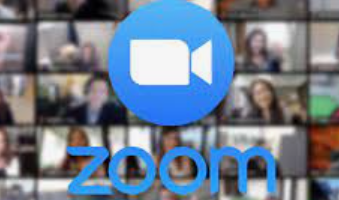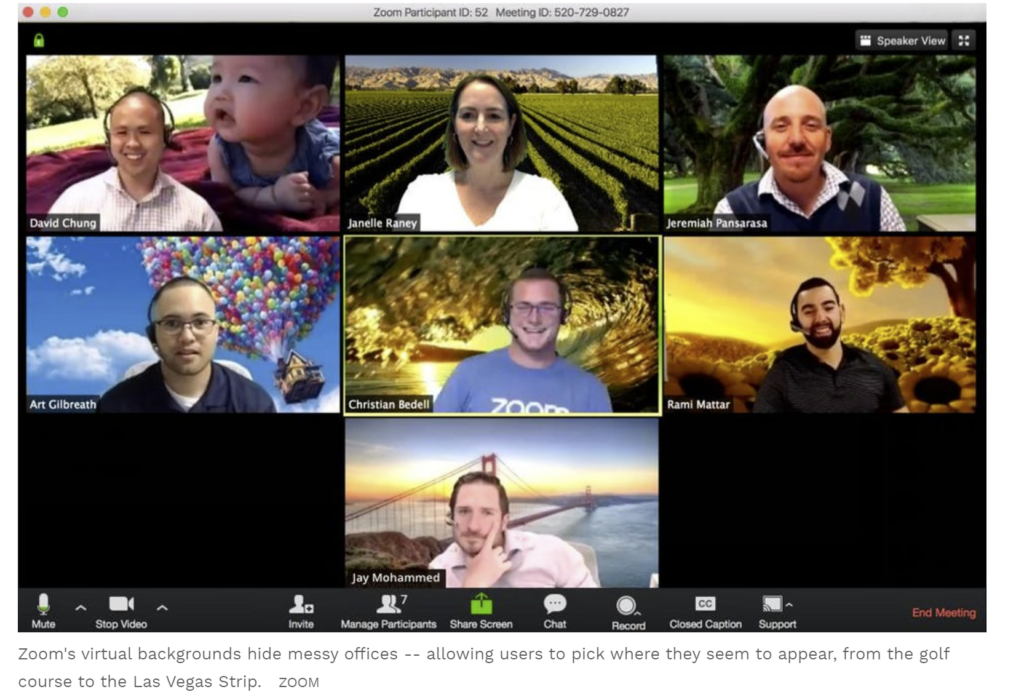Zooming into the future

If you haven’t been living under a rock for the last 24 months, you probably know about Zoom and have used it multiple times. It may have been for school, work, family gatherings, awkward birthday parties where you aren’t sure whether/how to talk to people, and so much more. Most people had never heard about Zoom until the pandemic pushed the technology to the forefront – Zoom penetrated even the tiniest corners of the world, and it was like one minute we didn’t know about it, and then all of a sudden we couldn’t live without it.
Zoom – the platform we can’t live without.
By Adela Jamal
If you haven’t been living under a rock for the last 24 months, you probably know about Zoom and have used it multiple times. It may have been for school, work, family gatherings, awkward birthday parties where you aren’t sure whether/how to talk to people, and so much more. Most people had never heard about Zoom until the pandemic pushed the technology to the forefront – Zoom penetrated even the tiniest corners of the world, and it was like one minute we didn’t know about it, and then all of a sudden we couldn’t live without it. But let’s back up for a second. For folks like myself (hello, 80’s kids), it doesn’t seem like that long ago that we were all still using our rotary phones and trying to figure out the best way (or time) to do local calls, international phone calls, pick up print-outs from fax machines, and basically stay in touch with friends, family, and colleagues all over the world. I was born into a very international family, so we had family members all over the place - US, India, Europe. It was a constant battle to figure out how to reach individuals, let alone see them on video – how futuristic! I specifically remember having to sometimes call people, and they would have to be at a certain relatives’ home in order to receive my phone calls. And you better believe that these phone calls were planned weeks in advance! Never in our wildest dreams did we think video calls would be something we would have or could afford. How things have changed… and for the better!

Side rant over. Coming back to the main point of this post – Zoom! As I mentioned a moment ago, most people think that Zoom was born overnight. Many believe that the company developed this product because of the pandemic and the position we were put in – isolation, quarantine, social distancing etc. The reality is, however, that Zoom has been around for almost a decade. That’s right, a decade! The technology that you just learned about has actually been around for years. Zoom founder and CEO, Eric Yuan, first started dabbling in the idea around 2010. And why did he focus on this idea? Well, he used to be a software engineer, working for Cisco WebEx in the San Francisco bay area for many years. The main driving force behind his idea was that communication should not be difficult. Yuan saw firsthand the limitations of modern communications and video conferencing tools. He wanted to focus on a lightweight web client that would know what type of device you were using - it could work on any device - and it would also have a unique software that would block any issues or bugs that might pop-up when using various browsers. Most importantly, he focused on platform that would work almost anywhere – even on the slowest/most sluggish Internet connections. Isn’t lag the bane of our existence? Another key focus for him – accessibility! He understood the need for a platform that was accessible by everyone no matter where they were in the world. Access shouldn’t be limited to one type of person, affordability shouldn’t be a concern, and digital dexterity shouldn’t be a barrier. In contrast, let’s flash back for a second to a product you may or may not recall – Cisco Telepresence. This was a business product that was very expensive to set up and required a flawless physical space to implement. It was expensive for most companies, and I also recall the technical challenges that we faced when have a meeting in one of their Bay Area locations. Point here being: there have been many video conferencing ideas and products created over the last decade, but they were all so overly complicated and expensive. Fast forward to 2019, and Zoom has just gone public. Just as a soon as they finish ringing the bell on Wallstreet, the pandemic hits and they have a full offering - phone, chat, rooms, conferencing room connector, video webinars, Zoom for developers, and the free app marketplace. Pretty amazing to think of what one determined entrepreneur (and this talented team) was able to develop. So, what is it that Zoom did so well that made them a household name… and verb? In my opinion, it was what they chose to focus on. They were initially very curious to learn about what the users were doing and what they wanted from this platform. While many other companies tried to build or tackle video conferencing, the end product was complex and expensive. This model – where anyone could download the product and start off with a “freemium” version – was a game changer. Suddenly, it didn’t matter if you were already registered with Zoom or if you were a new user. You would simply receive an invitation to join a zoom meeting and with pretty much just one click, you could join! This was completely new to everyone – a real breath of fresh air. Gone were the days of struggling to log in, trying to figure out if you had an account and if someone had paid top dollar for the account. Zoom had a different model – they wanted to get their product out there, and they wanted to learn about users’ habits, preferences, challenges, etc. They wanted to offer a product that everyone could use. During the pandemic, in addition to other verticals, they targeted educators, hospitals, and many other groups where they knew they could support the masses and many times at no cost. This was a brilliant strategy on their part. As the platform grew, Zoom was able to benefit from the data they had collected - they continued to focus on what the customer needed and what was working, versus how to upsell or charge the individual or business. This accomplished a few key things - Zoom was able to support the masses and get their name out there, and they were also able to scale and figure out what the world really wanted from them, and of course then evaluate the right price point/tier, and that included serving not only individuals but also businesses. The cycle that was created was perfect - on one hand you had this great user base that was growing exponentially and providing key insights and data, and on the other side you had the Zoom engineers who were continuously using this information to refine a product that everyone was relying on daily. To me, this was a beautiful and unique relationship which was different from what most of the other videoconferencing platforms were doing. It was no longer a hard-to-use, choppy video that some software engineer probably just added to an audio platform. It was a sleek, seamless platform that was created solely around the video conferencing experience. And once everyone was able to try out the platform, they were hooked. It was finally what we all wanted and needed! So where does Zoom go from here? We are hopefully at a point in the pandemic where things will continue to improve, and as they do, there is the question around what will happen to remote work and virtual needs. The way I see it, even while the pandemic may decline, we have learned too much to go back to our old ways. And I think this will be applicable across the board. We have learned that we like flexibility and want to see our friends, families, and colleagues via our devices. And, we want to do that from anywhere at any time! Plus, AR and VR are already building up steam, and I can most definitely see Zoom utilizing this technology and having it compliment (not replace) their offerings. One thing we have seen is that Zoom is nimble, focused on the end-user, and the CEO is very much focused on the future of communication. In my opinion, they are one of the real winners during this pandemic, even though they were not created out of this pandemic.




love how you brought out the strategic move on Zoom’s end to offer a freemium version, make it accessible in a time when nobody needed another stress and then use that data from their users to provide insight on how to improve their product. really insightful